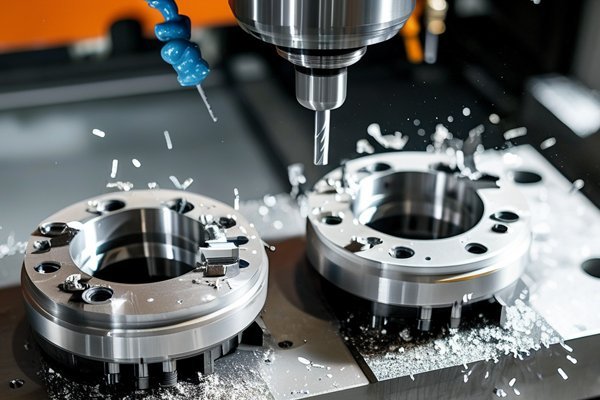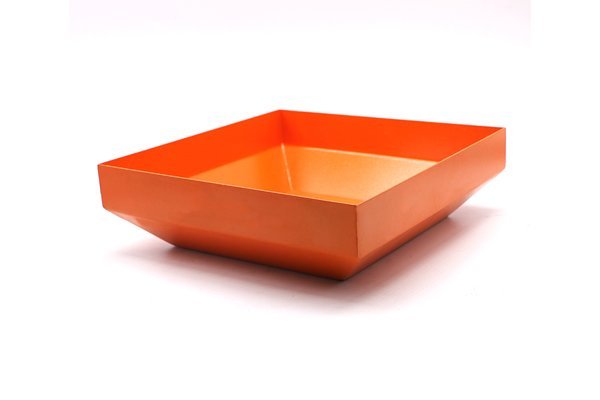Did you know that the global plastic market is projected to reach a staggering 1 trillion U.S. dollars by 2025? As this industry continues to grow, the importance of understanding the performance differences of various plastics in manufacturing processes such as CNC (Computer Numerical Control) machining has never been more critical. CNC machining has revolutionized how we produce precision parts with high accuracy and repeatability. However, selecting the right plastic material for your CNC machining projects can significantly affect the produced part’s performance, durability, and cost-effectiveness.
In this comprehensive guide, we will explore the various types of plastics used in CNC machining, their unique properties, and how to optimize their use for different applications. By the end of this blog, you will understand how to make informed decisions about plastic materials in CNC machining, ensuring that you harness their full potential for your manufacturing projects.
1.1 What is CNC Machining?
CNC machining is a subtractive manufacturing process that utilizes computer-controlled tools and machinery to precisely remove material from a workpiece to create a specific shape or design. Common CNC operations include milling, turning, drilling, and grinding. The precision offered by CNC machining is essential across various industries, including aerospace, automotive, medical, and electronics.
1.2 Importance of Plastics in CNC Machining
Plastics are among the most versatile materials available for CNC machining. They offer numerous benefits, including:
In CNC machining, several types of plastics are commonly used. Each one has unique properties that make it suitable for specific applications. Let’s delve into some of the most widely used plastics and their performance characteristics.
2.1 Acrylic (PMMA)
Properties:
Applications:
Acrylic is often chosen for applications requiring clarity, strength, and UV resistance. It’s preferred over glass due to its shatter-resistant properties.
2.2 Polycarbonate (PC)
Properties:
Applications:
Polycarbonate plastics are stronger than acrylic and can withstand heavier impacts, making them ideal for protective applications.
2.3 Polypropylene (PP)
Properties:
Applications:
Polypropylene is popular due to its lightweight and robust nature, often used in applications where flexibility is crucial.
2.4 Nylon (Polyamide)
Properties:
Applications:
Nylon’s high tensile strength and scratch resistance make it excellent for mechanical components subjected to friction.
2.5 Polyethylene (PE)

Properties:
Applications:
Polyethylene is incredibly versatile, making it a common choice across a wide range of industries.
2.6 Delrin (POM)
Properties:
Applications:
Delrin offers excellent dimensional stability, making it suitable for high-precision applications.
Each plastic material presents unique advantages and limitations that can affect CNC machining results. Below, we compare the performance characteristics of various plastics.
3.1 Machinability
The machinability of a plastic refers to how easily it can be cut, shaped, and formed during CNC machining. Some plastics, like acrylic and polycarbonate, are easier to machine with standard tooling. Others, like Delrin, may require specialized cutting tools for optimal results.
3.2 Thermal Stability
It’s crucial to consider how plastics behave under heat generated during machining. For example, polysulfone (PSU) has excellent thermal stability, making it suitable for applications requiring high-temperature performance, while nylon can deform under high heat, complicating machining processes.
3.3 Chemical Resistance
Different plastics have varying levels of chemical resistance, which is vital depending on the application’s environment. Polypropylene offers excellent resistance to aqueous chemicals, while nylon can absorb moisture which might affect its dimensional properties over time.
3.4 Mechanical Properties
Each plastic’s mechanical properties, including tensile strength, impact resistance, and flexibility, determine its suitability for certain applications. Materials like polycarbonate offer high impact resistance, making it ideal for protective applications, while nylon is known for its strength under load.
Choosing the right plastic material for your CNC machining project is critical to ensuring optimal performance and cost efficiency. Here are key considerations to keep in mind:
4.1 Application Requirements
Identify the specific needs of your application. Are you looking for a material that can withstand high temperatures, extreme pressures, or chemical exposure? Answers to these questions will guide your choice of plastic.
4.2 Cost and Budget
Different plastics come with varying price points. While some materials may be more expensive, they might offer higher performance or longer lifespan, potentially saving costs in the long run.
4.3 Availability
The availability of raw materials can affect the timeline of your project. Ensure that the plastic you select can be sourced in the required quantities and dimensions when needed.
4.4 Environmental Considerations
With increasing awareness of sustainability, consider the environmental impact of your material choice. Some plastics are recyclable, while others may not be, influencing the environmental footprint of your production process.
To achieve superior results in CNC machining, it’s essential to implement specific optimization techniques tailored to the type of plastic being machined. Here are some practical strategies:
5.1 Tool Selection
Using the right cutting tools is crucial for effective machining. For example, carbide tools are generally recommended for harder plastics, while high-speed steel tools may work well with softer materials. Always consider the plastic’s properties when selecting tools.
5.2 Cutting Parameters
Adjusting cutting speed, feed rate, and depth of cut can significantly impact machining quality. Lighter cuts and slower feed rates often lead to better surface finishes and reduced risk of material deformation.
5.3 Temperature Control
Maintaining optimal temperatures during machining can prevent thermal deformation in plastics. Coolants can also be used effectively to reduce heat buildup, ensuring material integrity.
5.4 Post-Processing
Post-processing techniques such as sanding, polishing, or surface coating can enhance the final surface finish of machined parts. Using the right approach based on the desired outcome ensures high-quality products.
In summary, selecting the right plastic for CNC machining is not a trivial matter; it involves considering the material’s properties, application requirements, and the specific challenges associated with machining plastic materials. Each type of plastic—whether acrylic, polycarbonate, nylon, or any other—offers unique advantages and constraints that must be understood to maximize their performance in CNC machining applications.
Understanding these properties can significantly enhance the efficiency of manufacturing processes while reducing costs and improving final product quality. As the plastic market continues to grow, professionals in the field must stay informed about the latest developments and best practices in CNC machining to remain competitive.
Remember, the plastics you choose can define the success of your project—so it’s worth investing the time and resources to learn and apply this knowledge effectively. Whether you are an engineer, designer, or manufacturer, understanding plastics’ nuances will not only inform your choices but contribute to well-executed end products that meet both performance and budgetary requirements.
This discussion on plastic performance in CNC machining is a vital aspect worth your attention and further exploration, guaranteeing that you are equipped to navigate the complexities of modern manufacturing with confidence.






